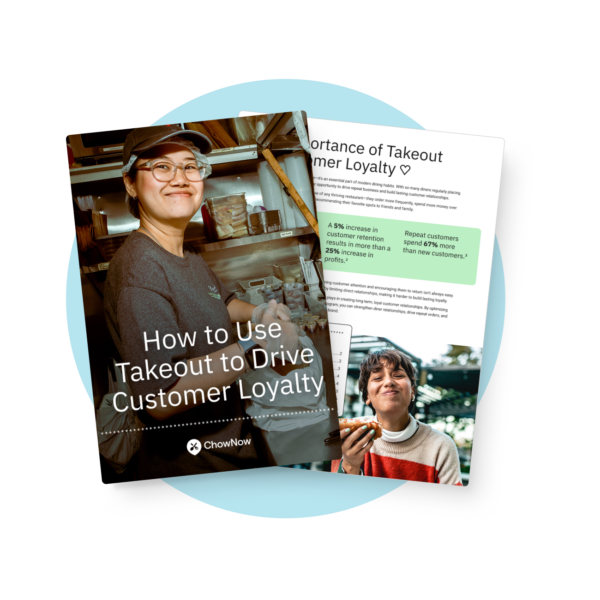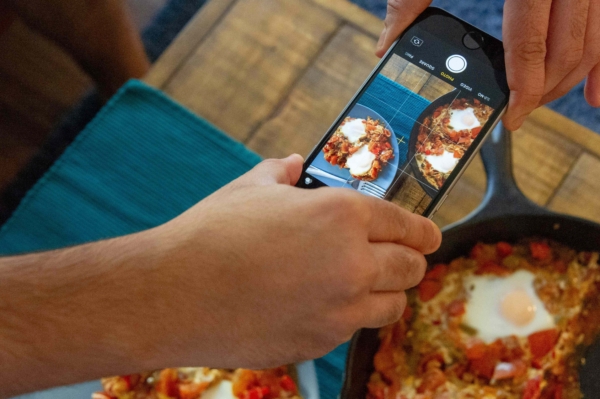Why Grubhub Prices Just Skyrocketed

If you’ve taken a look at Grubhub’s app lately, you may have noticed an immense amount of new restaurants available for online ordering. After all, the delivery giant more than doubled what they call their “restaurant inventory” in the past quarter. While customers might initially be delighted by the array of choices they have, they will be shocked and disappointed by Grubhub prices.
In fact, for nine out of every ten of these newly added restaurants, customers are paying higher Grubhub prices and having lower quality experiences. Why? Those restaurants never signed up to be on Grubhub’s platform, and in many cases aren’t even aware that they’re listed. Because of this, both consumers and restaurateurs pay the price.
Grubhub added 150,000 “non-partnered” restaurants to its platform last quarter.
Nearly half of all the restaurants now listed on Grubhub never agreed to join the platform.
In the fall of last year, Grubhub announced that it was pursuing an aggressive growth strategy that involved adding tens of thousands of “non-partnered” restaurants to its platform.
In fact, they added 150,000 non-partnered restaurants to their platform in Q4 2019. They signed up just 15,000 partners in the same period. When you look at their “restaurant inventory” in total, nearly half of all the restaurants now listed on Grubhub never agreed to join their app.

In contrast to a typical sales agreement—in which a restaurant would sign a contract and consent to working with Grubhub—the process for adding non-partnered restaurants happens without restaurateurs’ knowledge.
If you own or run a restaurant, Grubhub will bypass you and upload your menu and information to their site without asking.
Then, when a customer wants to place a Grubhub order from your restaurant, Grubhub will have someone (either a driver or a call center rep) phone in a pickup order to you. A driver will show up to retrieve the food and then deliver it to the consumer, with your restaurant being none the wiser.
Since it all occurs without your restaurant’s consent, Grubhub can’t charge you the steep commissions it levies on partnered restaurants (which, by the way, it plans on increasing). Instead, your customers end up paying Grubhub prices that are extremely high to cover all the costs.
What are the prices for a Grubhub order from a non-partnered restaurant?
Grubhub shared that customers can end up paying $47 for $26 worth of food.
While Grubhub prices vary, the company’s latest investor letter explained some of their fees. In the diagram below, you’ll see an example order from a non-partnered restaurant. The customer ends up paying $16 in fees. With the tip, that’s a $47 total for $26 worth of food.

Grubhub’s letter notes: “There tend to be more problems with these orders, and we bear 100% of the responsibility for restaurant errors.” This speaks to an important fact about orders from non-partnered restaurants: The guest experience is simply subpar.
Customers pay Grubhub higher prices for a worse experience—and your restaurant suffers.
Restaurateurs report inaccurate menus, angry customers, and confused staff.
When customers order through Grubhub, they likely have no conception of your restaurant’s arrangement (or lack thereof) with the delivery company.
When a consumer orders—for example—a dish you haven’t served in two years, or expects to pay the prices you charged all the way back in 2001, they’re bound to be disappointed. Unfortunately, this frustration gets directed back to restaurants and their staff.
As Philadelphia restaurateur Judy Ni comments, “The guest doesn’t understand what’s going on — it makes us look absolutely terrible, and it becomes this mess of confusion for the guest.”
Adam Mesnick, owner of San Francisco sandwich shop Deli Board, shared similar sentiments with Eater. In a recent weekend, about 15 Grubhub drivers came to his shop to fulfill orders—some of which included out-of-date and unavailable menu items. Even these couriers suffer, he notes. “It’s their job to pick up food, and they’re just kind of confused.”
If you think this sounds bad, you’re not alone. Even Grubhub CEO Matt Maloney recognizes the problems that orders from non-partnered restaurants create. In Grubhub’s October earnings call, he admitted, “It’s a bad experience for diners, it’s a bad experience for drivers, it’s a bad experience for restaurants.”

In short, if your restaurant isn’t paying Grubhub’s high prices to be listed on their platform and have your food delivered, your business may be misrepresented and your customer relationships will probably suffer.
Why is Grubhub adding all of these non-partnered restaurants?
These orders aren’t really profitable. It’s all just to capture new customers.
It’s clear that this arrangement creates unpleasant experiences for restaurants, customers, and couriers. On top of this—per their own investor letter—Grubhub isn’t making much money off of these orders. In fact, if non-partnered orders made up even a third of Grubhub’s order volume, the company would lose money.
This policy has come out of a growth-at-all-costs mindset as third-party delivery apps have come under more pressure and criticism from shareholders, restaurateurs, and the general public. Grubhub is listing all of these non-partnered restaurants in order to catch the attention of consumers and offer them more options.
Grubhub President and CFO Adam De Witt explains: “One [purpose] is to capture new diners that we otherwise might not have captured that are looking for those restaurants online. If they’re searching for that restaurant, we want to make sure that they know that they are available on Grubhub.“
Unfortunately, when Grubhub and other big tech companies try to squeeze money out of the restaurant industry, it’s the independent restaurants and their hardworking staff that suffer the most.
What can you do?
Most restaurateurs don’t have the time or money to closely monitor their online reputation. Grubhub and other apps know this, and put the burden on you to notice your unauthorized listing and ask for it to be removed. Nation’s Restaurant News provides some guidance for doing so in this article.
It’s time to take back your digital reputation and educate your guests about this issue. It’s worthwhile to educate your customers about this issue and ask them to order directly from you, whether that’s via the phone or your branded, commission-free online ordering system.
- Write posts on social media about Grubhub’s partner growth strategy and how it affects your restaurant.
- Call attention to the higher Grubhub prices your customers might be paying by posting on social media, putting signage in your restaurant, and having in-person conversations with your guests.
- Put flyers in your takeout bags encouraging your customers to order direct.
Continue to speak up. There are thousands of restaurateurs—150,000, in fact—who are facing the same issue.






